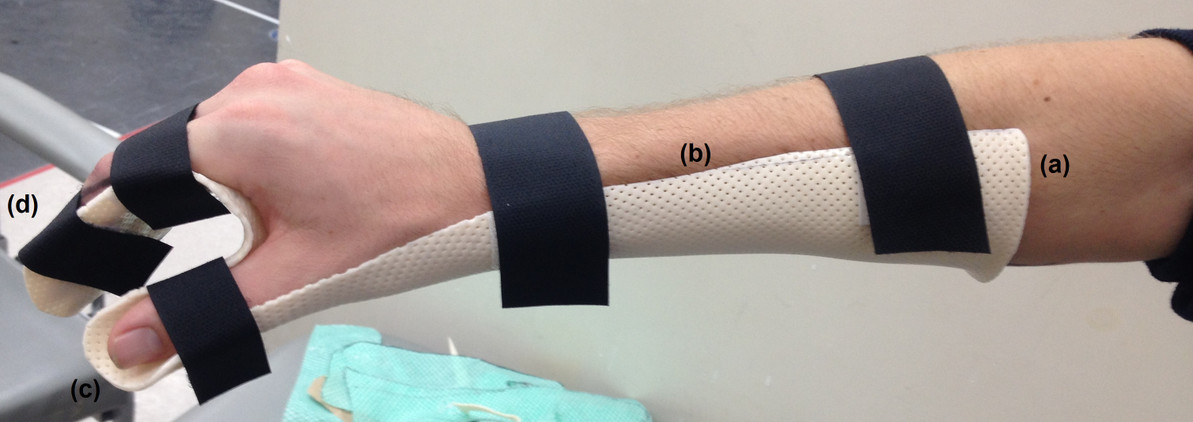Medical Splints and Supports: Enhancing Patient Care in the Medical Field
 Splints and Supports are invaluable tools in the medical field, serving a diverse range of purposes from immobilizing injuries to providing support during rehabilitation. With advancements in material science and design, these devices have become indispensable in promoting patient comfort, stability, and recovery. In this article, we explore the various types of splints and supports commonly used across medical specialties, highlighting their benefits and applications.
Splints and Supports are invaluable tools in the medical field, serving a diverse range of purposes from immobilizing injuries to providing support during rehabilitation. With advancements in material science and design, these devices have become indispensable in promoting patient comfort, stability, and recovery. In this article, we explore the various types of splints and supports commonly used across medical specialties, highlighting their benefits and applications.
Ankle Splints and Supports
Ankle injuries are prevalent, whether due to sports-related activities or everyday accidents. Ankle splints and supports play a crucial role in stabilizing the ankle joint, preventing further damage, and facilitating healing. These devices come in various forms, including lace-up ankle braces, rigid splints, and adjustable supports. They provide compression, stability, and protection to injured ankles, aiding in the management of sprains, strains, and fractures.
Arm Supports
Arm supports are designed to immobilize and support the upper extremities, ranging from the shoulder to the wrist. They are commonly used post-injury or post-surgery to promote proper healing and prevent further strain. Arm slings, shoulder immobilizers, and elbow braces are examples of arm supports that provide stability and comfort while allowing for necessary movement during the recovery process.
Back Supports
Back injuries and discomfort are prevalent among individuals of all ages and occupations. Back supports, such as lumbar belts and posture braces, are designed to alleviate pain, improve posture, and provide support to the spine. These devices are particularly beneficial for individuals with chronic back conditions, those recovering from surgery, or those engaged in physically demanding activities.
Back and Abdominal Supports
Back and Abdominal Supports are tailored to provide targeted compression and stability to the lumbar and abdominal regions. They are commonly used in the management of conditions such as lower back pain, herniated discs, and abdominal muscle weakness. These supports promote proper alignment, reduce strain on the spine, and facilitate rehabilitation exercises aimed at strengthening core muscles.
Manosplint
Manosplint is a specialized thermoplastic material used for custom splint fabrication. It offers clinicians the flexibility to create personalized splints tailored to individual patient needs. Manosplint is moldable when heated, allowing for precise shaping and contouring to accommodate unique anatomical variations. This versatility makes it an ideal choice for orthopedic and rehabilitation settings, where custom splinting is essential for optimal patient outcomes.
Elastic Bandages
Elastic bandages are versatile medical tools used for compression, support, and immobilization of various body parts. They are commonly employed in the treatment of sprains, strains, and soft tissue injuries. Elastic bandages conform to the contours of the body, providing gentle compression to reduce swelling and promote circulation. They are available in different widths and lengths to accommodate diverse patient needs.
Splinting Pans
Splinting pans are essential equipment used in the fabrication of custom splints and orthoses. These pans are designed to heat thermoplastic materials, such as splinting sheets or Manosplint, to a malleable state for molding. Splinting pans feature adjustable temperature settings and ergonomic designs to facilitate the fabrication process, ensuring the creation of high-quality splints that meet patient-specific requirements.
As a conclusion, Splints and Supports play a vital role in the comprehensive care of patients across various medical specialties. From ankle splints and arm supports to back braces and custom orthoses, these devices offer clinicians effective tools for immobilization, stabilization, and rehabilitation. This provides patients with enhanced comfort, mobility, and recovery outcomes.
Related Blog Posts:
Exploring the Utility of Medical Splinting Pans
A Guide to Understanding Manosplints
The Essential Role of Splint Pans in the Splinting Process
Recent Posts
-
What to Expect During Hand Therapy: A Guide for Patients and Caregivers
If you’re starting hand therapy—whether after surgery, a stroke, or a neurological …Apr 6th 2025 -
Improve Hand Function and Dexterity with the Neofect Smart Pegboard
The Neofect Smart Pegboard is a revolutionary tool in the field of occupational therapy. I …Mar 25th 2025 -
Overcoming Challenges in Sports Medicine Clinics: Tips for Success
Running a sports medicine clinic presents unique challenges that require a balance of clinical exper …Dec 2nd 2024



